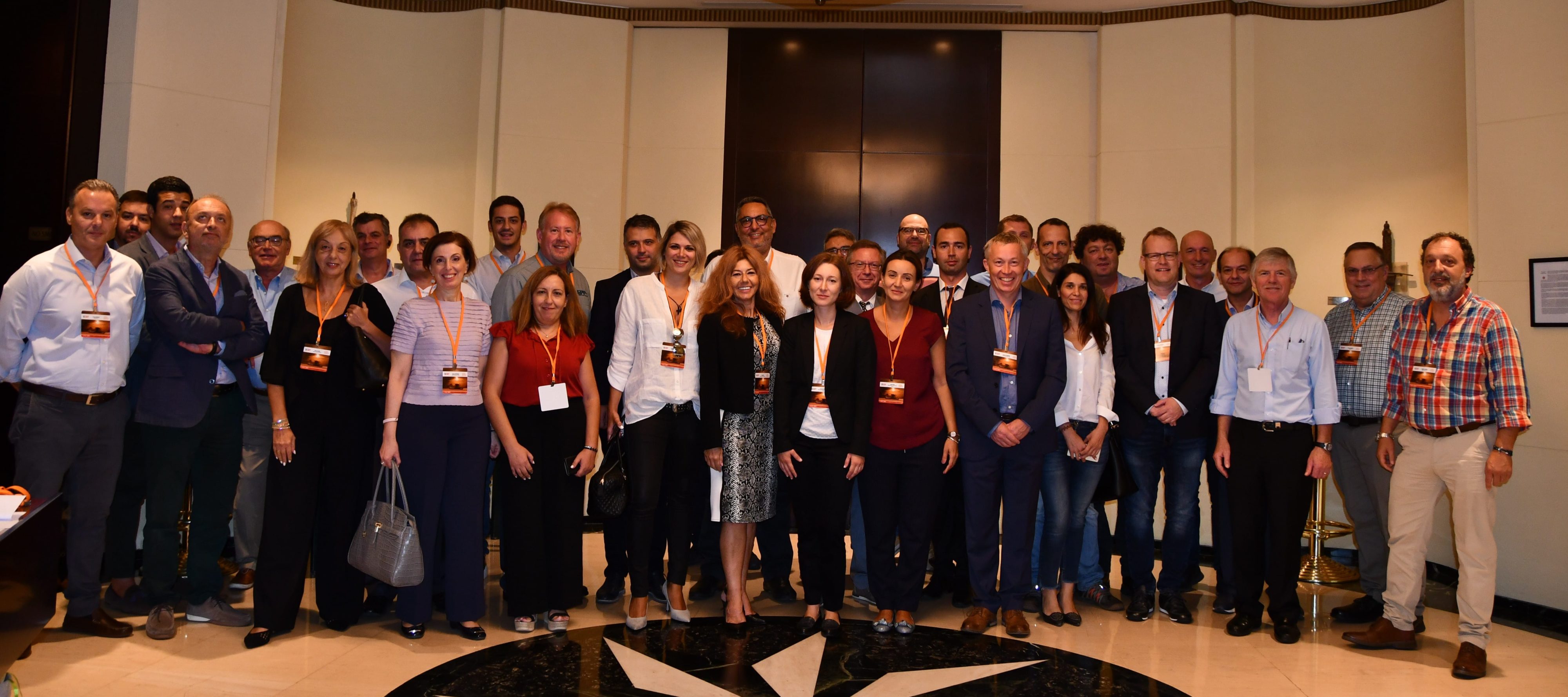U.S. Soy Quality, Sustainability Promoted at 2nd Annual USSEC Technical Conference In Greece
- Category:
- Aquaculture
- General News

This year, Greece resumed U.S. soy imports, and to demonstrate the commitment of U.S. soy industry to European customers, USSEC organized a two-day technical conference in the capital city of Athens in September.
In a dual effort to increase awareness on the quality attributes and sustainability of U.S. Soy and with the goal to transfer the most recent knowledge to U.S. soy customers in Greece, the conference “Advances in Value Added Soy Protein Ingredients and Feed Extrusion Technology for Sustainable and Profitable Aqua and Animal Production” was dedicated mainly to the Greek aqua and feed industries. Because of firm inquiries received from Greek poultry and livestock customers, the agenda of the meeting was updated with topics related to non-ruminant animal nutrition and concentrated on high value soy protein as a sustainable replacement for fish meal in aqua feeds and young animals.

Participants heard updates on topics of the highest interest for the rapidly changing feed, aqua, and livestock industry: new soy protein ingredients, soy fermentation, and extruded feed technology. Prominent speakers from the U.S. and EU, leading value-added soy processing industry, feed extrusion equipment, feed additives companies, and researchers, addressed topics of high interest for the Greek aqua and livestock industries in detail.
USSEC consultant Dr. Jan van Eys offered information on U.S. Soy’s superior quality and sustainability, with the goal to increase awareness among Greek customers on soy differentiation by origin and advantages derived from the proper use of U.S. Soy in animal feeding. In the context of the EU market, meeting the demand from supermarkets and consumers regarding sustainability is a major priority in production of feed for the Greek aqua industry and U.S. soy perfectly matches this inquiry.
Dr. Carsten Pedersen, emphasized that the use of indirect methods for quality control methods for soybean meal cannot be used for soy added products and only direct methods like lys: crude protein ratio, sum of amino acids’ ratio to crude protein and trypsin inhibitor content is the choice of methods for comparison product made from different producers and technologies.

At this stage, as the global aqua and feed industries are looking for solutions to replace expensive animal protein ingredients, recent developments in fermentation technology proved that this process is enhancing the nutritional properties of vegetal protein ingredients and is diminishing the anti-nutritional factors. This is particularly true for the trypsin inhibitors reduction from soy to levels that are nearly undetectable by laboratory analysis. The use of fermented soy can be produced several ways and offer potential high value across aqua and livestock species.
“In the search for solutions to replace fishmeal in aqua species and young animals, the conference speakers emphasized that U.S. Soy should be considered part of the solution, thanks to the newly U.S. developed high value soy protein ingredients: ME-Pro and Enzomeal,” commented Dr. Iani Chihaia, conference facilitator. The introduction of U.S. high value soy protein ingredients at the conference allows the expectation that these products will fairly rapidly enter the routine feed products and programs. This is notably the case for MePro and Enzo-Meal. This conference majorly contributes to the realization of this objective and USSEC should play a pivotal role in the near future.

For the feed manufacturing topics included in the agenda, a special focus was dedicated to feed extrusion technology. Charles Engrem of Wenger USA introduced the latest concepts in aqua and animal feed extrusion and how the functionality of soy proteins should be improved. Participants learned about the unique fish feed extrusion technology developed by Wenger in the U.S. State-of-the-art Wenger extrusion equipment permits precise control of finished product density and allows the manufacturing of floating, fast-sinking, or slow sinking feeds, as needed by customers. The time-tested U.S. extrusion equipment insures up to 5 days of water stability for fish feeds and allows incorporation up to 45% total fat in fish feed pellets.






The event in Athens clearly provided a positive exposure of USSEC not only to key players in the aquaculture ingredients supply, but also to the livestock sector of a country that normally gets limited attention. However, in aquaculture, Greece is the second largest EU aqua country, a true leader in production and development and is generally seen as a reference in the feeding and nutrition of the main Mediterranean fish species: sea bream, sea bass and meagre. With a continuously rapidly developing aqua sector progress shown in the inclusion of soy or soy derived products in aqua feeds will be reproduced in other nearby EU countries: Turkey, Croatia, and Spain.
USSEC’s efforts to support this activity demonstrated the commitment of the U.S. soy industry for end users in the growing Greek aqua, poultry, and feed industries.